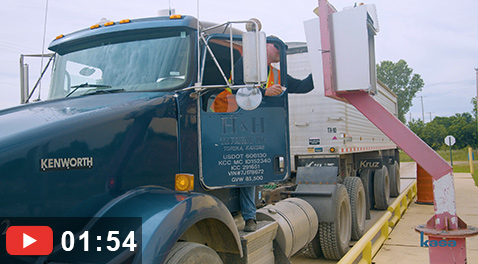- Home
- Kasa's Part in Automation – Our Capabilities
- Emulation and Simulation Capabilities
Unlocking the Benefits of Simulation and Emulation
With the introduction of machine learning, simulation and emulation technologies have revolutionized the manufacturing and automation industry, enabling engineers to test and optimize their systems before deployment. This has optimized manufacturing, thus reducing commissioning time, saving costs, and preventing costly downtime.
Kasa Controls & Automation is an expert example of simulation adopters. With extensive experience in numerous industries like automotive, paint finishing, and baggage handling, we’re specialists in many types of material handling system conveyors: skid, friction, and belt conveyors, power and free systems, and bridge cranes.
Kasa engineers Syd Panzer, Engineering Manager PLC & SCADA Programming, Alan Periera, Senior Controls Programmer, and Adam Casada, Emulation Engineer, revealed the benefits of simulation and emulation and how we leverage these technologies to provide value to our customers.
The Difference between Simulation and Emulation
Simulation is a technology that allows engineers to proof new and potential project designs virtually – both the physical/mechanical and the PLC control. It helps engineers test if the mechanical layout can produce the necessary takt time. Panzer emphasized that "simulation occurs early in the overall project process." Simulation, being carried out in mere seconds, is useful for throughput and bottleneck analysis and sales/demonstration purposes.
Emulation, on the other hand, gives a fully functional model of the conveyor and control systems, allowing engineers to test and complete the PLC code and HMI interface, and then demonstrate its completion and readiness to the customer. This internal acceptance testing, also known as factory acceptance testing (FAT), is commonly required by customers. Additionally, we recommend emulation for ongoing projects, as the design phase is normally finished by the time the emulation model can be built.
So far, we are confidently emulating models for the automotive, baggage handling system, and parcel automation industries. More recently we’ve started performing emulation for IntelliFinishing, our industrial finishing system division. This is almost completely opposite as simulation has been the standard for IntelliFinishing with baggage handling quickly adopting the service as well.
How Can Simulation and Emulation Benefit Manufacturers?
These technologies hold multifactor benefits for our customers and us.
Simulation allows all parties to assess the layout and expected outcomes to adjust the design before implementation. Similarly, emulation can allow us to have less time on the job site since a significant amount of work is completed beforehand, like logic validation, sequence testing, and identifying system-level issues. Additionally, emulation is a good option if a manufacturer wants to upgrade their existing system.
Casada noted, “If a customer wants to modify or expand an existing system, we can emulate the existing system with the modifications to see the results.”
Most importantly, these services will:
1. Provide proof of throughput rate
2. Save Kasa and the customer commissioning time, resulting in significant cost savings
3. Reduce risk of system failure or downtime
4. Increase confidence in Kasa’s custom solutions
Kasa Controls & Automation: Experts in Simulation & Emulation
We’ve developed a significant level of expertise on emulation in certain industries. Starting with ‘Demo 3D’ 10 years ago, baggage handling is what took us to the next level due to the highly complex nature of the newer ‘Emulate 3D.’
With tools that help our engineers achieve real-world manipulations of products in a virtual environment, Emulate 3D is superior to other emulation software packages. Pereira boasted, “There have been reports from people — internal and external — that our capabilities for emulation on automotive and BHS meet or exceed competitors’ capabilities.”
The difference is found in two key components in their software development: user interface and user experience. Through the emulations, engineers can ensure a more user-friendly, intuitive interface, allowing operators to learn more quickly, navigate the software easily, and reduce the likelihood of errors.
We are also the first Rockwell Automation customer in the world to achieve digital engineering, which means that they have industry and system expertise verified by Rockwell to design, build, install, maintain, and support their customer's systems with confidence and lower risks.
Optimize Your New and Existing Systems Today
Overall, our use of the Emulate 3D software and Rockwell’s custom tools has made the commissioning process more efficient and reliable, ultimately streamlining your operations, reducing downtime, and boosting productivity — resulting in big cost savings.
If you're looking for reliable and effective simulation and emulation services for your industrial automation systems, contact us.









